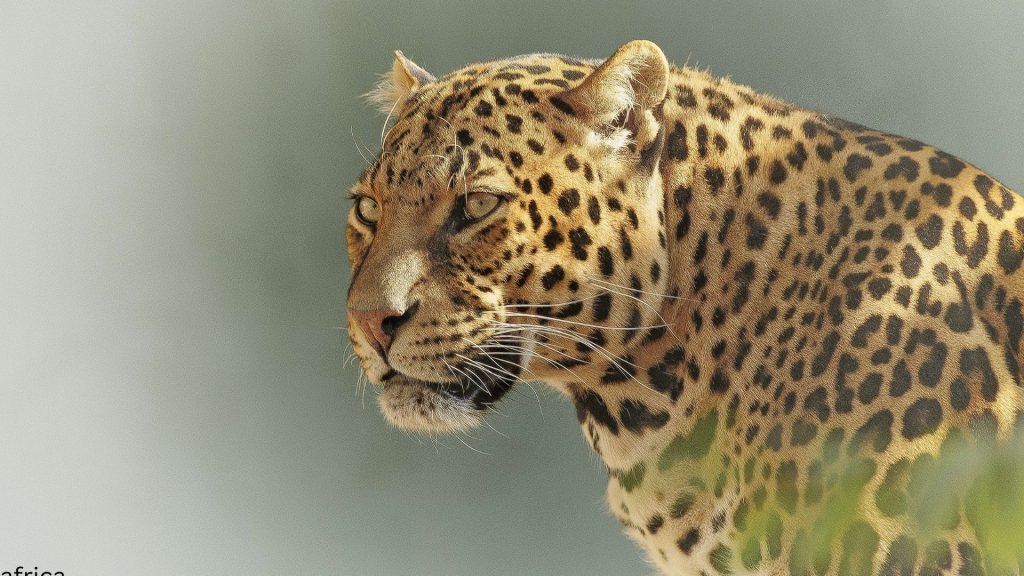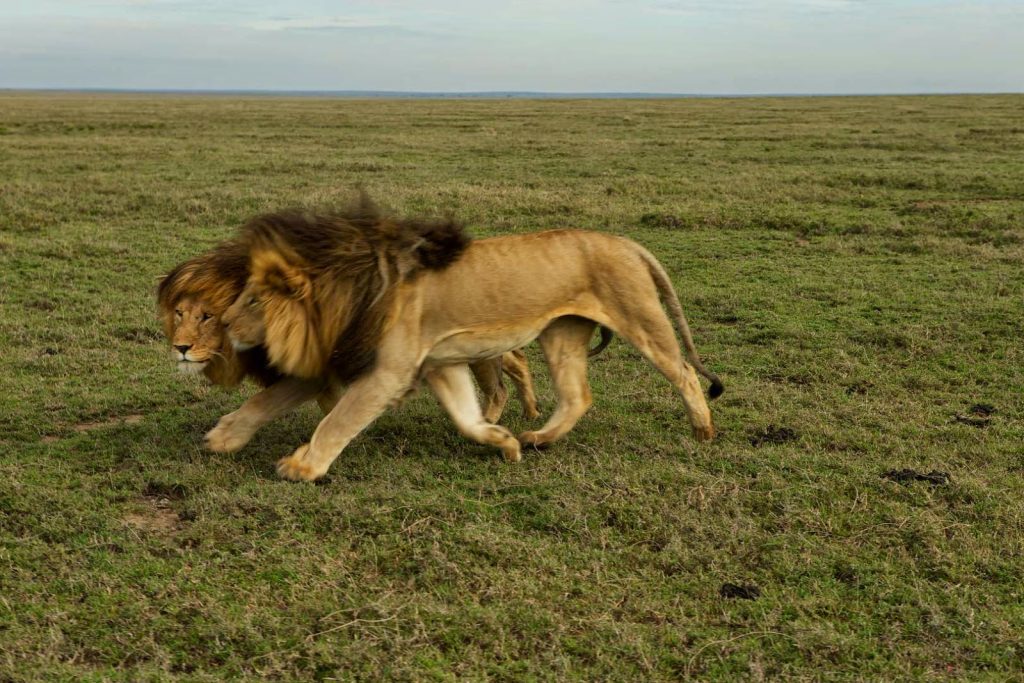Arusha National Park Attractions
Arusha National Park Attractions
“home to white and black Colobus monkeys”
Arusha National Park Attractions Description:
A green jewel, it is home to the fourth-highest mountain in Africa, Mount Meru (4,566 m). Anyone visiting this park will be thrilled by the breathtaking landscapes, which range from the Meru Crater in the west to the Ngurdoto Crater in the southeast to the grasslands and, of course, the alkaline Momella Lakes in the northeast, making it one of the best National Parks in Tanzania.
It is one Tanzania’s most beautiful National Park and topographically varied northern circuit park, It’s dominated by Mt Meru, an almost perfect cone with a Spectacular notable crater called Ngurdoto Crater (often dubbed Little Ngorongoro) with its swamp-filled floor. Wildlife is present, but for the most part, it’s a sideshow to the scenery and the trekking and climbing possibilities, making it one of the unique National Parks in Tanzania.
Historical Background of Arusha National Park:
According to my guide book, the European history of the park goes back to 1876 when Count Teleki, a Hungarian, visited the Momella area. He commented on the vast number of hippopotamuses and blacks.
He had seen rhinos, but sadly, they were no longer in the park. In 1907, the Trappe family moved to Momella to farm, using large areas of the present park as a cattle ranch.
The elder Mrs Trappe, the first woman to become a professional hunter in East Africa, voluntarily set aside a large part of the Momella estate for a game sanctuary. When the park was established in 1960,
the farm was incorporated into it. In 1960, the Ngurdoto Crater National Park was established. In 1967, the Mt Meru area also became part of the park. The name of the park was then changed to Arusha National Park.
The name Arusha was derived from the local Waarusha people who used to live in the area.
Highlights:
This park is often overlooked by visitors, worried they will not see that much wildlife. However, Arusha National Park has a lot to offer and dazzles with a perfect mix of flora and fauna and diversified landscapes. Passing the “small Serengeti” during a game drive, you are likely to spot peaceful herds of buffaloes, shy bushbucks on the edge of the forest as well as warthogs and zebras. Heading towards the Ngurdoto Crater you will soon find yourself in a lush rain forest – a great place to spot the athletic black and white colobus monkey as well as the elegant mitis monkey. The Ngurdoto Crater is a smaller version of the Ngorongoro Crater and has a diameter of about 3 km. With a bit of luck, you might even spot buffaloes in the swamps on the crater floor.
Due to the low number of predators in the park, walking safaris are permitted. This is a must for anyone wanting to get a closer look at the moss-covered trees and the occasional red-hot pokers and those wanting to get up close to wildlife. Most common sightings whilst on a walking safari include buffaloes, warthogs, giraffes, and various birds such as the silvery-cheeked hornbill, little bee-eater, and the occasional long-crested eagle. The walk takes visitors to the refreshing Tululusia waterfalls and back to the Momella gate.
On the way towards the Momella Lakes, visitors are in for a treat as common waterbucks and reedbucks love to hang around the lakeshore. An array of water birds like cormorants, kingfishers, and beautiful flamingos are also often spotted. There are seven alkaline lakes to be seen, each with a different salt concentration. Visitors can also go on a canoe trip on the small Momella Lake.
Arusha National Park is also home to about a handful of African elephants, but they are hardly ever spotted due to their constant movement. The same goes for leopards that roam the vast foggy forests of Mt Meru.
INTERESTING FACTS ABOUT ARUSHA NATIONAL PARK
Arusha National Park covers Mount Meru, a prominent volcano with an elevation of 4566 m, in the Arusha Region of northeastern Tanzania. The park is small but varied, with spectacular landscapes in three distinct areas, making it one of the unique National Parks in Tanzania.
In the west, the Meru Crater funnels the Jekukumia River; the peak of Mount Meru lies on its rim. Ngurdoto Crater in the southeast is grassland. The shallow, alkaline Momella Lakes in the northeast have varying algal colors and are known for their wading birds.
Arusha National Park is a small, charming park in northeast Tanzania. It is near the city of Arusha and provides great views of Mount Kilimanjaro. The park is
scenic and diverse and offers many animal and plant species. And it also has a rich diversity of landscapes. It is the ideal reserve for all kinds of animals, from lakes, waterfalls, and swamps to volcanos, mountains, and tropical rainforests. The swamps, rainforests, and lakes attract many beautiful birds, including silvery-cheeked hornbill and thousands of pink-hued flamingos. This park is also the only place in northern Tanzania where you can easily spot the black-and-white colobus monkey.
Mount Meru is the second highest peak in Tanzania after Mount Kilimanjaro, which is just 60 km away and forms a backdrop to views from the park to the east. Arusha
National Park lies on a 300-kilometer axis of Africa’s most famous national parks, running from Serengeti and Ngorongoro Crater in the west to Kilimanjaro National Park
in the east.
The park is just a few kilometers northeast of Arusha, though the main gate is 25 km east of the city. It is also 58 km from Moshi and 35 km from Kilimanjaro International Airport (KIA).
ARUSHA NATIONAL PARK FACT FILE
-At just over 200 square miles, Arusha National Park has great wildlife densities, and it is home to the world’s largest population of giraffes, Cape buffalo, elephants, hippos, and zebra are found
here in abundance, and the occasional lion and leopard can also be sighted on a game drive.
-It is one of the few national parks in Tanzania where you can go on walking safaris.
-It also pairs well with longer itineraries on the northern safari circuit, including the Ngorongoro
Conservation Area and Serengeti National Park.
-If you are looking to squeeze in a short safari after climbing the steep slopes of Mount Meru, Arusha National Park is also ideal as it lies at the foot of it.
– The park is excellent year-round for birding, especially between November and April when migratory birds from Europe and North Africa are present and the local birds have their breeding plumage on display.
– The most common animals found in this park are the Abyssinian black and white colobus monkeys, the Vervet monkeys, the red forest duikers, hippos, elephants, giraffes, buffaloes,
bushbucks, and sometimes the leopard.
– It harbors incredible wildlife species that cannot be viewed in other national parks in the northern circuit including vegetation types like the lush rainforest, savannah, and alpine
vegetation.
– Arusha National Park has woodlands of Acacias, Kigelias, and Schefflera. But besides them, it is also home to Juniperus, Euphorbias, and Ficus. You will also get to see the flowers of Lantana,
Hibiscus and Jacaranda, resulting in one of the great National Parks in Tanzania
Discover and explore the diversity of Arusha National Park attractions amidst National Parks in Tanzania!
The Park is nested on the foothills of Mount Meru, Africa’s most beautiful volcano and fifth-highest peak. Only 45 minutes drive from Arusha City center, one finds this beautiful Park.
Mount Meru makes an ideal high-altitude acclimatization warm-up before conquering the Kili.
The Park offers way too many attractions compared to its area
The unforgiving landscapes of Mount Meru and Ash Cone, scenic view of Momella Lakes, tropical forest glades, and Ngurdoto Crater are just a few Visitors to this Park will have opportunities to do game viewing, ride a horse, climb Mount Meru as well as do organized walks with a ranger!
Outstanding Wildlife Diversity
Arusha National Park has a rich variety of wildlife, but visitors should not expect the same game-viewing experience they find in other national parks of Tanzania’s northern circuit. Despite the park’s small size, common animals include the giraffe, Cape buffalo, zebra, warthog, black-and-white colobus monkey, blue monkey, flamingo, elephant, bushbuck, and many other African animals.
Leopard populations are present but rarely seen. Birdlife in the forest is prolific, with many forest species more easily seen here than elsewhere on the tourist route – Narina trogon and bar-tailed trogon are both possible highlights for visiting birders, whilst the range of starling species provide somewhat less gaudy interest. The park also boasts an incredibly diverse variety of bird life, making it a
a popular stop for birding enthusiasts.
BIRDING IN ARUSHA NATIONAL PARK
The Best time for Bird watching is from November to April; migratory birds from Europe and North Africa are present, and resident birds have their breeding plumage. Bird watching is at its very best during these months, but wildlife watching is easiest (and at its best) in the dry season – June to October, making it one of the wonderful national parks in Tanzania for birding activities.
Bird species
– African fish eagle
– African olive pigeon
– Augur buzzard
– Bar-tailed trogon
– Black saw-wing
– Cinnamon-chested bee-eater
– Egyptian goose
– Great crested grebe
– Hartlaub’s turaco (NE)
– Little grebe
– Narina trogon
– Peregrine falcon
– Red-fronted parrot
– Scaly francolin
BRIEF BACKGROUND OF MOMELA LAKES
The Momela (or Momella) Lakes are seven shallow lakes located within Arusha National Park namely: Big Momela, Small Momela, El Kekhotoito, Kusare, Rishateni, Lekandiro, and Tulusia. The entrance to the park is in Village Momella, Meru District of Arusha Region, Tanzania
Geography
Lakes are alkaline and formed from the volcanic debris created when Mount Meru blew its top 250,000 years ago. As the lakes are alkaline, animals do not drink from their waters,[1] but you can spot zebras and birds on their banks.
Lakes are the highlights of the Eastern section of Arusha National Park, covering the forest of Mount Meru.
The largest of several alkaline lakes that are located inside Arusha National Park of northern Tanzania. It serves as a tourist hotspot, with several animals to see including both greater and lesser flamingoes, hippos, and several other bird species. It has a maximum and minimum depth of 31 m and 10 m respectively and also supports micro algae.
Big Momella is located next to the northeastern border of Arusha National Park, and next to its siblings small Momella and Lake Rishateni. The eastern shore of the lake is land belonging to a farmer’s settlement.
WHY VISIT LAKE MOMELLA
After visiting Momella Lake Gates the chance to see hundreds of flamingos rising to the sky with their pink color. You may also see hippos and giraffes and watch them in their natural habitat. The day ends with a drive to the viewpoint – Boma la Megi, where you enjoy a sundowner with a magnificent view of Mt. Kilimanjaro
ACTIVITIES TO DO
- Game drives around it and its neighboring lakes Rishateni and – small Momella – with several viewpoints, campsites, and picnic sites from which you could spend time. Visit the cave waterfall. The cave falls are a waterfall as well as one of the many water sources for the Arusha Urban Water Supply Authority that are located just a short distance inside the Arusha National Park and on the
slopes of Mount Meru – Tanzania. - Canoeing at Arusha National Park Lake Momella
Kilimanjaro view point (Arusha). A beautiful picnic site on the slopes of Mount Meru that provides amazing views of Mount Kilimanjaro from afar, but only on a day with clear skies. More reliable views are those of most of Arusha National Park’s lowlands from an elevated altitude, along with that
of the Ngurudoto crater rim. - visit waterfalls inside the park Tulusua Waterfalls, Maio Waterfalls, Napuru Waterfalls
Momella viewpoint Boating and Canoeing Glide through pink colonies of chattering flamingos, approach grazing buffalo on the shoreline and enjoy the company of
snorting hippos. - Walking Safaris, the African bush on foot, the sounds and smells of nature feeling the elements and close encounters with the game are the most evocative safari experience
HOW TO GET THERE
Start from Arusha to Lake Momella by vehicle, with no preference for 4 x 4’s over conventional 2-wheel drives. You could reach it through the
national park gates
NGURDOTO CRATER
WHAT YOU SHOULD KNOW ABOUT NGURUDOTO CRATER
Altitude 1824 m.a.m.s.l. (rim)
1520 m.a.m.s.l. (floor)
Ngurdoto Crater in Arusha National Park is one of five beautiful volcanic calderas located inside the northern Tanzania region of Arusha, along with Ngorongoro, Empakaai, Maasai, and Olmoti. With an approximate depth of 300 meters and a diameter of 3.2 km, it is more like a miniature Ngorongoro; However, the floor of Ngurudoto is softer and otherwise unsuitable for driving on, leaving walking safaris as the only way of exploring it.
The actual volcano that formed it is now extinct, but from the pear shape of the present-day crater floor, it seems that towards the end of its activity, two cones were lying very close to each other. These then collapsed when the magma chamber underneath them withdrew to deeper levels – leaving them without support.
The crater is surrounded by a rainforest that is teaming with wildlife. This extends to cover part of the crater floor, with the rest being an evergreen swamp – which serves as a grazing ground for the onsite herd of buffalos. Other animals include several species of monkeys, birds, dik-diks, and even elephants that inhabit the forest, with the latter being the hardest to find.
The viewpoints at Ngurdoto crater
-Rhino in the southern rim
– Mikindu is also in the southern rim
– The rock in the southern rim
– Bufalo (southern rim)
– The glades in the northern rim
– Leitong in the northern rim
At approximately 1824 m.a.m.s.l., the Leitong viewpoint is the highest and so far, the most scenic of these, offering views of the snowy peak of Mount
Kilimanjaro, as well as the Momella lakes and agricultural settlements nearby.



